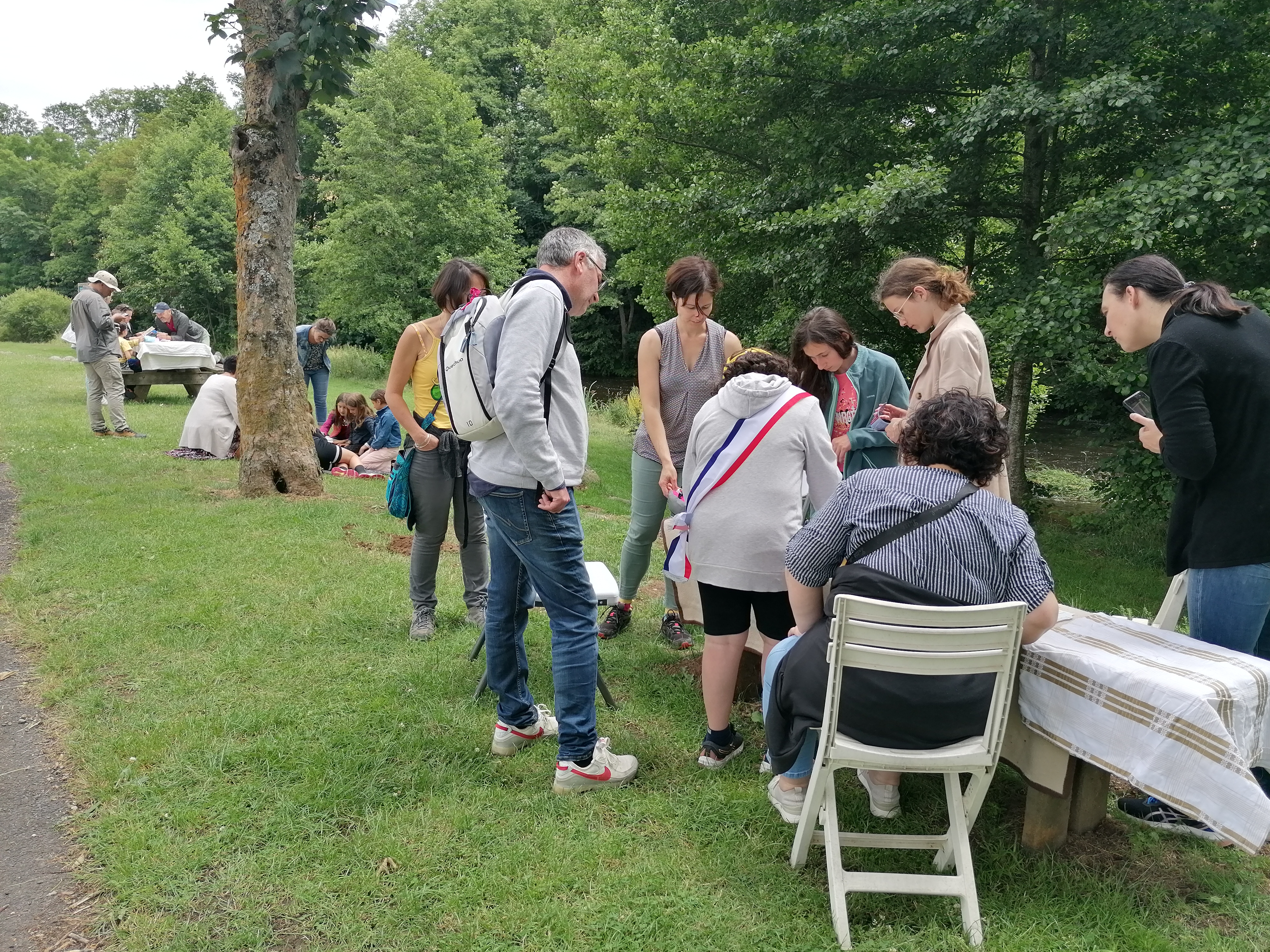
As part of the LIFE Eau&Climat project "Facilitating the mobilization of local players", the EPAGE Loire-Lignon focused on fun activities for the general public.
An escape game devised by Chouette Impact was tested at the Fête du Lignon on July 2. Using very little equipment, to solve this escape game, teams of 4 to 8 people had to unlock various padlocks on the pockets of a backpack. The game's varied puzzles tackled different themes of sustainable development (food, waste sorting, transport, housing, etc.), culminating in an assessment of our carbon footprint and desirable reductions. It was a fun way to test your knowledge and learn about the steps you can take to help mitigate climate change.
The activity took place outdoors, with several teams playing in parallel using several replicas of the backpack. It attracted a family audience who thoroughly enjoyed the game, which lasted around 1 hour.


In addition, the EPAGE Loire-Lignon proposed a 7-panel trail along the rivers of the village of Tence (43). A booklet enabled visitors to discover the circuit independently, while learning about the river, its issues and the history of the village. To motivate younger visitors, the booklet also included a treasure hunt with 2 levels of difficulty, with questions on each panel leading to a mystery word.
Both the content of the panels and the booklet were created over the course of the school year in collaboration with the Tence municipal youth council and the E3D label students from the Lionchère secondary school, who designed the treasure hunt and illustrations. The tourist office was also involved in the heritage discovery aspect.
This collaborative effort was highly rewarding, and helped to mobilize a wider circle of friends, family and elected representatives around the youngsters. An official inauguration took place during the Fête du Lignon, attracting some 150 people. Since then, the circuit has remained accessible to all, and the booklet is available at the Tence tourist office all year round, and via a QR code found on the signs.

This project was carried out with funding from the Agence de l'Eau Loire-Bretagne and the European Union's LIFE program.
